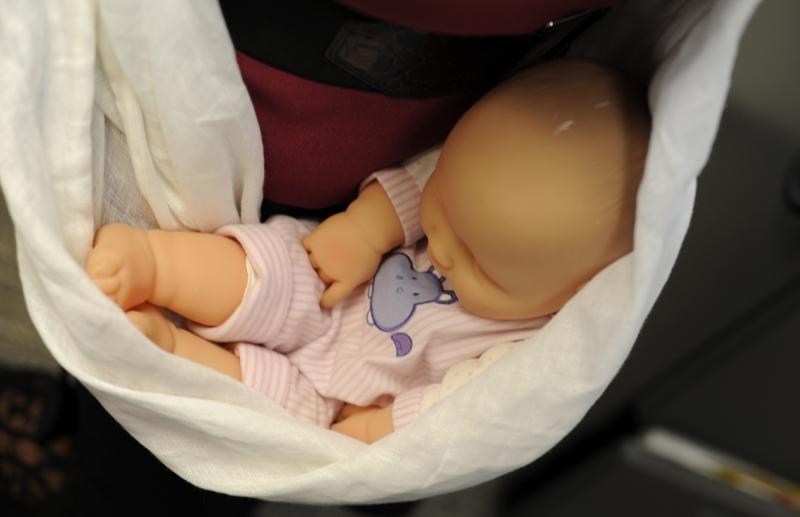WASHINGTON, D.C. - Infant slings and wraps have been used for thousands of years in many different cultures. For many parents across the United States, “babywearing” promotes a positive bond between child and parent. The U.S. Consumer Product Safety Commission (CPSC) wants to make sure that parents and caregivers are aware of important safety information related to the proper use of slings.
CPSC is taking this opportunity to urge everyone to use slings and wraps safely, as CPSC has identified 14 infant suffocation deaths with sling-style carriers over the past 20 years. After reviewing numerous cases, child safety experts at CPSC have determined that parents with infants younger than four months of age, premature, low-birthweight babies, and babies with colds and respiratory problems should take extra care in using a sling, including consulting their pediatrician.
Suffocation/asphyxiation can occur when babies are contained entirely within the pouch of a sling with their face, including nose and mouth, pressed against the adult’s body, blocking their breathing. Suffocation can occur within minutes.
Because of the nature of the product and its use, some slings tend to keep an infant in a curled, chin-to-chest position, which can interfere with breathing. When an infant is in the chin-to-chest position, suffocation can occur. Both scenarios are serious concerns to CPSC. Many of the babies who died in slings were twins in separate slings and infants with breathing issues.
CPSC recommends that parents and caregivers:
- Make sure you can see your baby’s face or eyes in the sling and that your baby can see you. Also, you should place the baby’s face at or above the rim of a sling or wrap so that their face is visible.
- After nursing your baby, change the baby’s position in the sling, so that the baby’s face is at or above the rim of a sling or wrap and that their face is visible and clear of fabric and the mother’s body. You should be vigilant about frequently checking the baby in a sling.
A new voluntary consensus standard for slings is being worked on by ASTM International. This is a positive step toward providing manufacturers with an effective safety standard.
This warning is not intended to characterize all slings as being dangerous to babies. CPSC has identified (1) specific situations that can pose a risk of serious harm to babies, and (2) simple safety tips that we hope the babywearing community can share with new parents.

Proper use of a sling. Baby’s face is at or above the rim of a sling or wrap and is clear of the fabric and obstructions.

Improper use of sling. Instead, keep the infant’s head above all fabric and away
from the mother’s body. Make sure the infant’s face is not covered by the sling.

Above and below: Improper use of a sling. Infant is in a curled position with chin touching chest. Suffocation can occur in this position.


Infants can suffocate in this position against the mother’s body or the sling’s fabric
About the U.S. CPSC
The U.S. Consumer Product Safety Commission (CPSC) is charged with protecting the public from unreasonable risk of injury associated with the use of thousands of types of consumer products. Deaths, injuries, and property damage from consumer product-related incidents cost the nation more than $1 trillion annually. Since the CPSC was established more than 50 years ago, it has worked to ensure the safety of consumer products, which has contributed to a decline in injuries associated with these products.
Federal law prohibits any person from selling products subject to a Commission ordered recall or a voluntary recall undertaken in consultation with the CPSC.
For lifesaving information:
- Visit CPSC.gov.
- Sign up to receive our email alerts.
- Follow us on Facebook, Instagram, X, BlueSky, Threads, LinkedIn and Truth Social.
- Report a dangerous product or a product-related injury on www.SaferProducts.gov.
- Call CPSC’s Hotline at 800-638-2772 (TTY 800-638-8270).
- Contact a media specialist.
Please use the below phone number for all media requests.
Phone: (301) 504-7908
Spanish: (301) 504-7800

